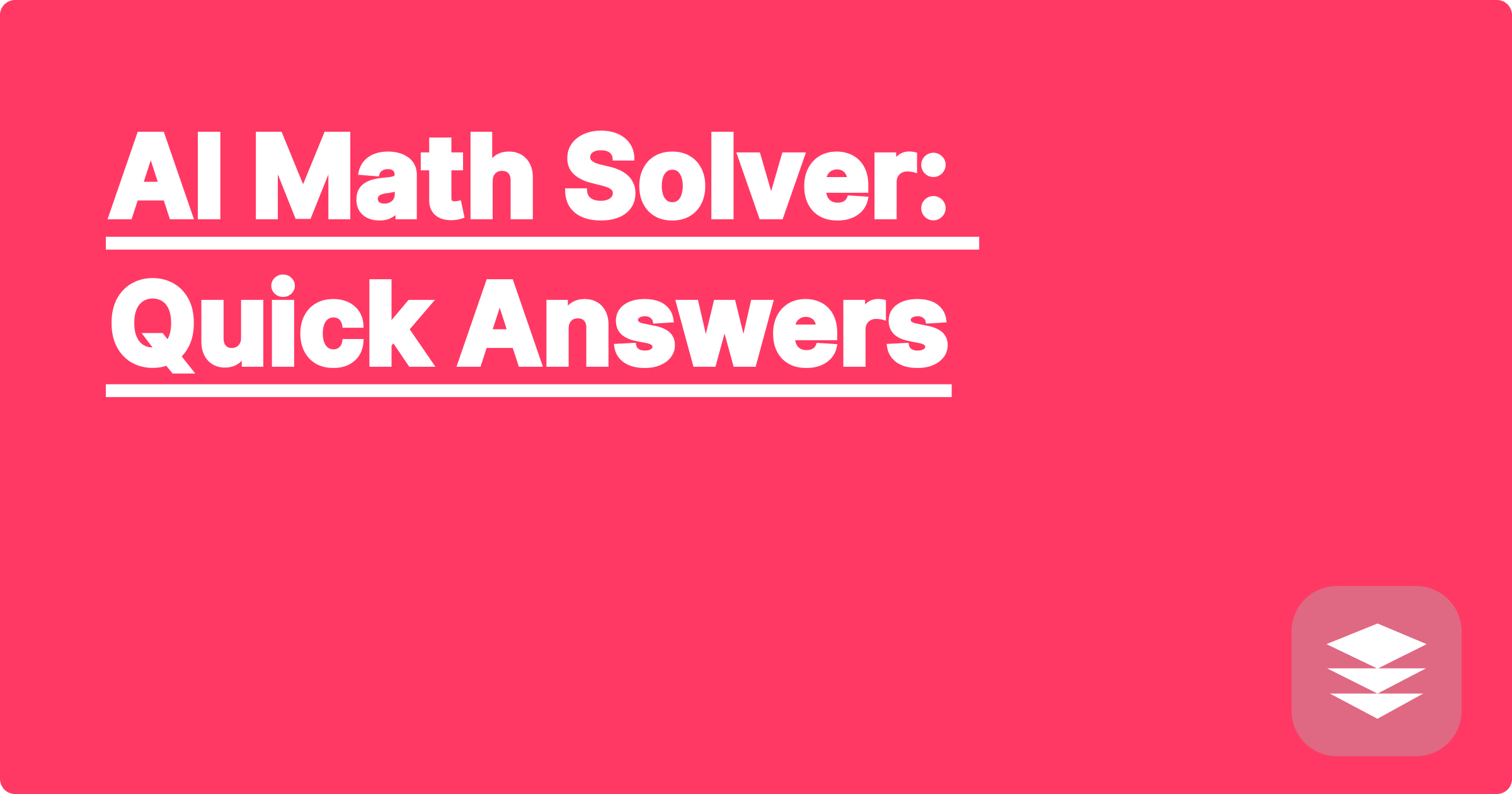
STEM fields often present complex mathematical challenges that can be time-consuming and sometimes overwhelming. From intricate calculus problems to elaborate statistical models, the need for efficient and accurate solutions is paramount. Artificial intelligence offers a promising avenue for tackling these challenges, providing tools that can assist STEM students and researchers in navigating the mathematical landscape with increased speed and precision. AI math solvers are emerging as powerful resources, enabling users to find quick answers and gain a deeper understanding of complex mathematical concepts.
This emerging technology has significant implications for STEM students and researchers. By automating certain aspects of problem-solving, AI can free up valuable time and mental resources, allowing individuals to focus on higher-level thinking, analysis, and creative problem-solving. Furthermore, these tools can serve as valuable learning aids, providing step-by-step solutions and explanations that can enhance comprehension and build a stronger foundation in mathematical principles. This can be particularly beneficial for students struggling with specific concepts or researchers exploring new and unfamiliar mathematical territories.
STEM fields rely heavily on mathematical modeling and analysis. Students and researchers frequently encounter complex equations, differential equations, statistical distributions, and optimization problems. Solving these problems often involves tedious calculations, complex algebraic manipulations, and a deep understanding of underlying mathematical principles. Traditional methods can be time-consuming, prone to errors, and may not always provide the most efficient solution path. Moreover, understanding the underlying theory and applying it to real-world scenarios can be a significant hurdle for many. This is where AI-powered solutions can make a substantial difference.
AI math solvers leverage the power of machine learning and natural language processing to tackle a wide range of mathematical problems. Tools like Wolfram Alpha, ChatGPT, and Claude offer distinct capabilities for solving equations, generating graphs, performing symbolic computations, and even providing explanations and step-by-step solutions. Wolfram Alpha excels at handling complex computations and providing structured data related to mathematical concepts. ChatGPT and Claude can be particularly useful for explaining concepts in natural language, walking through problem-solving strategies, and offering different approaches to solving a problem. These tools can be accessed through web interfaces, APIs, or dedicated software applications, offering a flexible range of options for users.
Using an AI math solver generally involves a straightforward process. First, clearly define the problem you want to solve. This might involve writing out an equation, describing a word problem, or specifying a set of constraints. Next, select the appropriate AI tool based on the nature of the problem. For example, Wolfram Alpha might be best suited for definite integrals or complex algebraic manipulations, while ChatGPT or Claude might be more appropriate for explaining a concept or providing a step-by-step solution to a word problem. Input the problem into the chosen tool, ensuring that the syntax and formatting are correct. The AI will then process the input and generate a solution, which may include numerical answers, symbolic expressions, graphs, or explanatory text. Finally, review the solution carefully to ensure it aligns with your expectations and understanding of the problem. It's important to critically evaluate the results and not blindly accept the AI's output.
Consider the problem of solving a differential equation, for instance, y'' + 4y = sin(2x). Using Wolfram Alpha, you can simply input the equation, and the tool will generate the general solution, including complementary and particular solutions. Another example might involve finding the area under a curve defined by a complex function. Wolfram Alpha can handle this efficiently, providing both the exact solution and a numerical approximation. For a more conceptual problem, such as understanding the application of the Central Limit Theorem, ChatGPT or Claude can provide a detailed explanation in plain language, along with illustrative examples. They can also generate code snippets in languages like Python, demonstrating how to simulate the theorem using libraries like NumPy and SciPy. For example, you could ask, "Explain the Central Limit Theorem and show me how to simulate it in Python."
Integrating AI math solvers effectively into STEM education and research requires a strategic approach. It's crucial to understand the limitations of these tools and use them responsibly. AI solvers should be viewed as aids to learning and research, not replacements for fundamental understanding. Focus on using these tools to enhance your comprehension of concepts, explore different problem-solving approaches, and verify your own calculations. Don't rely solely on AI to solve every problem; instead, use it as a tool to supplement your learning and research. Develop a strong foundation in mathematical principles and critical thinking skills to effectively interpret and evaluate the results provided by AI. By combining the power of AI with a solid understanding of mathematical concepts, you can significantly enhance your academic performance and research productivity.
To maximize the benefits of AI math solvers, actively engage with the solutions they provide. Don't simply accept the answers without critical evaluation. Work through the steps presented by the AI, understand the underlying logic, and compare the results with your own understanding of the problem. Use these tools to explore different approaches to problem-solving and gain a deeper understanding of the underlying mathematical principles. By actively engaging with the solutions, you can transform AI math solvers from simple answer providers into powerful learning and research tools. Explore the different functionalities offered by various AI tools and experiment with different input formats to find the most effective ways to utilize their capabilities. This continuous exploration and experimentation will help you become a more proficient user and unlock the full potential of these powerful tools. Embrace the potential of AI to enhance your STEM journey, but always remember the importance of developing a strong foundational understanding of mathematical concepts and critical thinking skills.
Ace STEM Exams: AI Study Planner
STEM Homework Solver: AI Assistance
AI for Lab Data: Analysis Made Easy
Master STEM: AI Exam Prep Guide
AI Coding Tutor: Debug Smarter
AI in Engineering: Boost Your R&D